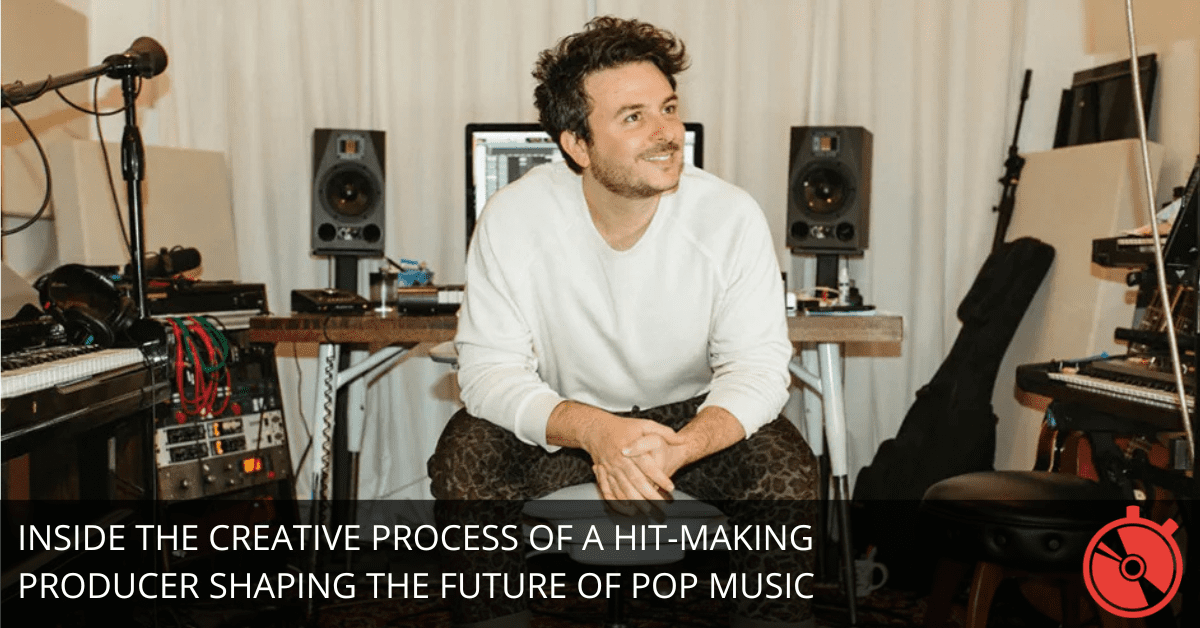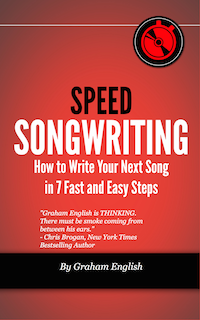
Dan Nigro didn’t start as a pop music heavyweight. He was the frontman of an emo band (As Tall as Lions), then pivoted to writing commercial jingles just to survive.
But somewhere along the way, he figured out how to shape the voices of artists like Olivia Rodrigo and Chappell Roan into chart-topping, generation-defining pop music.
His secret? He listens. He adapts. He helps artists hear their own voices. And if you’re an artist, producer, or industry professional, you can apply his methods to your own career.
Here’s exactly how he does it—and how you can use his approach to make better music, build stronger collaborations, and create work that actually resonates.
The Producer Who Took Control of His Own Destiny
Early in his career, Nigro got frustrated. As a songwriter, he’d create something, hand it off to a producer, and wait—sometimes for weeks—only to get a version of the song that didn’t match his vision.
He realized that without production skills, he had zero creative control. So he started learning. He figured out how to program drums, arrange tracks, and mix his own music.
For artists and producers, the lesson here is simple: If you don’t want to be at the mercy of someone else’s vision, learn to produce. You don’t have to be a world-class engineer, but you do need to understand the basics of a DAW (Logic Pro, Ableton, Pro Tools).
Want more control over your music? Start today. Open up your DAW and practice:
- Drum programming: Load up a basic drum kit and create a simple beat.
- Instrument recording: Lay down a bassline or keyboard riff.
- Arrangement skills: Take a basic loop and build it into a full song structure.
Helping Artists Find Their Own Voices
Nigro doesn’t impose a “signature sound.” Instead, he listens deeply to his artists and helps them refine who they already are. That’s why Chappell Roan went from making dark, moody music to the campy, theatrical pop of Pink Pony Club—because that’s who she truly was.
If you’re a producer, here’s what to do:
- Talk before you record. Ask your artist: What are you obsessed with? What visuals do you see when you imagine your dream song? Let their answers guide the production.
- Watch their body language. If they light up when describing an idea, chase that.
- Push them to take creative risks. Roan hesitated when shifting to high-energy pop. Nigro encouraged her. If something feels bold but scary, that’s usually a sign you’re on the right track.
Artists take note: If your producer isn’t listening to you, find a new one.
How to Recognize a Hit—And Why That’s Not Enough
Nigro is blunt about this: He never knows if a song will be a hit. He only knows when it’s really good.
A song’s success depends on a lot of things outside the studio—cultural shifts, industry marketing, and even random luck. But what you CAN control is making something undeniable.
Here’s how to tell if a song is worth fighting for:
- Does it feel like the artist’s personality in sonic form? Nigro knew Pink Pony Club was special because it felt like Chappell Roan.
- Does it trigger a gut reaction? If you’re nervous about how people will react, it might be because you’ve tapped into something raw and real.
- Would the artist fight for it? If they hesitate, it’s not the song. If they light up, you’re onto something.
Great songs don’t guarantee hits. But they guarantee impact. And that’s what lasts.
The Second Album Struggle: Building a New Mountain
Nigro compares making a second album to building a new mountain while staring at the first one—fully formed, with its accolades, its streaming numbers, its “legacy.” Meanwhile, the new one just looks like a pile of dirt.
For artists, this is where the real mental battle begins. How do you create without the pressure of topping yourself?
- Detach from expectations. What made your first album great? It wasn’t the numbers—it was the honesty. Focus on that again.
- Keep experimenting. Nigro and Rodrigo didn’t try to recreate Driver’s License for Guts. They pushed for something different.
- Stay playful. The more you overthink, the worse it gets. Get messy. Write bad songs on purpose. The good ones will find their way through.
Creative Battles: When to Compromise, When to Stand Firm
Collaboration isn’t always smooth. Nigro and Roan had disagreements. He wanted a synth solo in Pink Pony Club—she insisted on a guitar solo. She won.
But on Red Wine Supernova, she hesitated to go full-camp. Nigro pushed her. He won.
The best collaborations work like this: You trust each other. You push each other. You listen.
If you’re an artist, here’s how to navigate creative differences:
- Know what hills you’re willing to die on. Roan KNEW she wanted a guitar solo. That’s the kind of confidence you need.
- But also—be willing to experiment. Let your producer try things. If it sucks, you can always go back.
- If you don’t trust your producer, that’s the real problem. The best teams challenge each other but respect the artist’s vision.
Final Thoughts: The Nigro Blueprint for Music Success
If you’re an artist: Stop chasing hits. Start chasing truth. Your voice, your weirdness, your obsessions—THAT’S what people connect with.
If you’re a producer: Your job is to bring the best out of your artist. Listen to them. Challenge them. Help them create something that sounds like them, but bigger.
If you’re in the industry: Invest in artists, not trends. Hits come and go. Careers last when they’re built on something real.
Nigro didn’t follow a formula. He followed his instincts. He made music that felt honest. And now? He’s shaping the future of pop.
So take the lessons. Apply them. And go make something that matters.

Enter your first name and email address below and click “GET ACCESS NOW!” to get the Speed Songwriting Cheat Sheet delivered to your inbox!
We guarantee 100% privacy. Your information will not be shared.

Hi Graham,
Thanks for this article. Another great one to take note of.
Thanks, Christine! Glad you enjoyed it. Appreciate you reading.